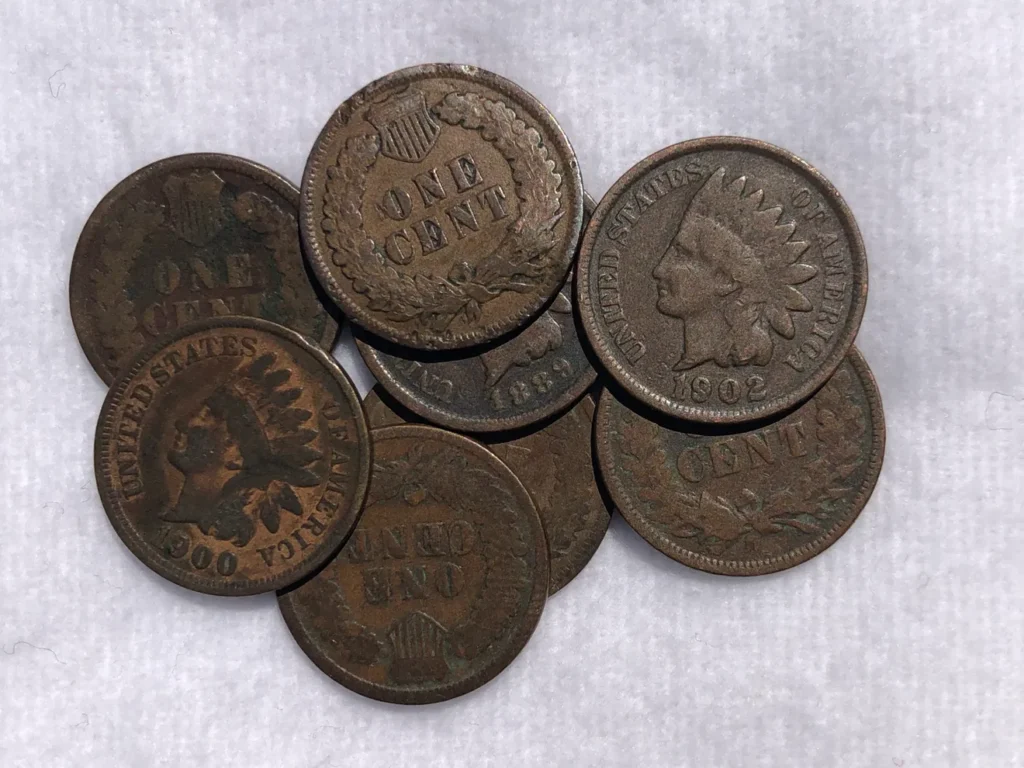In the world of collectibles, few items evoke the same sense of nostalgia, history, and charm as antique coins. Among these, the Indian Head penny holds a special place. This small, copper coin, minted by the United States from 1859 to 1909, has long been a favorite of coin collectors and history enthusiasts alike. But beyond its monetary value, the Indian Head penny offers a fascinating glimpse into America’s past—a time of significant change, growth, and evolution.
So, what makes the Indian Head penny so intriguing? And why, over a century after it was last minted, does it still capture the imaginations of collectors today? Let’s take a journey through history to explore the legacy of this iconic coin.
A Glimpse into America’s Past
The Indian Head penny was first minted in 1859, during a period of rapid expansion and industrialization in the United States. It was a time of westward migration, technological advancements like the telegraph and railroad, and the lead-up to the Civil War. Against this backdrop, the U.S. Mint sought to create a new design for the country’s one-cent coin that would reflect America’s growing national identity.
James Barton Longacre, the Chief Engraver of the U.S. Mint at the time, was tasked with creating the new design. His creation—a portrait of Liberty wearing a Native American headdress—was both a tribute to the nation’s indigenous heritage and a symbol of America’s forward-looking spirit. Despite the name, the figure on the coin is not actually an “Indian” but rather a representation of Liberty, a common motif in American coinage. The design struck a delicate balance between honoring the past and embracing the future.
The reverse side of the coin originally featured a simple wreath of laurel but was later replaced with an oak wreath and a shield to give the coin a more robust, patriotic feel. This design would remain largely unchanged throughout the coin’s 50-year run.
The Design and Symbolism
The Indian Head penny’s design is perhaps its most striking feature. The profile of Liberty, crowned with a feathered headdress, is both elegant and symbolic. In the context of the 19th century, the headdress was a nod to the Native American tribes that had long inhabited the continent, a recognition of their role in American history. However, some historians argue that the image also reflected the prevailing attitudes of the time, which often romanticized and simplified Native American culture while ignoring the harsh realities of westward expansion and displacement.
Despite these complexities, the Indian Head penny is often seen as a symbol of America’s unity and growth during a period of intense change. Its design is a reminder of the country’s evolving identity—one that was shaped by a mix of cultures, ideologies, and historical forces.
The use of copper in the coin also held symbolic value. At the time, copper was seen as a durable, reliable metal that could withstand the wear and tear of daily commerce. It was also relatively affordable, making the penny accessible to people from all walks of life. In this sense, the Indian Head penny was a coin for the people—used in everyday transactions but still imbued with a sense of national pride.
Collecting Indian Head Pennies: Rarity and Value
For coin collectors, the Indian Head penny is more than just a piece of currency—it’s a valuable artifact. The coin’s rarity, condition, and historical significance all play a role in determining its value on the collectors’ market. Like many antique coins, certain Indian Head pennies are worth significantly more than others.
Several factors contribute to the value of an Indian Head penny. One of the most important is the year of minting. For instance, pennies from the early years of production (1859 to 1864) tend to be more valuable, as fewer were produced and fewer still have survived in good condition. The most sought-after Indian Head pennies are those minted in 1877, one of the rarest years, due to the low number of coins struck. A well-preserved 1877 Indian Head penny can fetch thousands of dollars at auction.
Condition, or grade, also plays a critical role in a coin’s value. Coins that have been well-preserved and show little wear are more desirable to collectors. The grading system for coins ranges from “Poor” to “Mint State,” with Mint State coins being nearly flawless and showing no signs of circulation. Naturally, the better the condition, the higher the value.
Other factors that can influence a coin’s value include mint marks, die variations, and historical significance. For instance, some Indian Head pennies were minted with a small “S” mint mark, indicating that they were produced at the San Francisco Mint. These coins tend to be rarer than those minted in Philadelphia, and as a result, they are often more valuable.
Historical Context: The Changing Value of a Penny
When the Indian Head penny was first introduced, a penny held considerably more purchasing power than it does today. In the late 19th century, a single penny could buy a variety of small goods—candy, matches, or even a newspaper. Over time, however, inflation and economic changes diminished the value of the penny, and today it holds little practical purchasing power.
Despite this, the Indian Head penny remains a valuable collector’s item, not for its monetary worth in day-to-day transactions but for its historical significance and aesthetic appeal. For collectors, owning an Indian Head penny is like holding a small piece of American history in their hands—a tangible connection to a time long past.
The Legacy of the Indian Head Penny
Though the Indian Head penny was replaced by the Lincoln penny in 1909, its legacy continues to endure. The coin’s design, with its elegant portrayal of Liberty and its nod to Native American heritage, remains one of the most iconic in American coinage. For collectors, the Indian Head penny represents more than just a financial investment—it’s a piece of art, history, and culture rolled into one.
In many ways, the Indian Head penny serves as a symbol of a nation in transition. It was minted during a time when America was grappling with issues of identity, unity, and growth. As the country expanded westward and industrialized, the Indian Head penny circulated in the pockets of everyday Americans, from farmers to factory workers to businessmen. Each penny carried with it a story—a reflection of the times in which it was made.
Today, the Indian Head penny continues to captivate collectors and history enthusiasts alike. Its enduring popularity is a testament to its beautiful design, rich symbolism, and historical importance. Whether you’re a seasoned collector or simply curious about antique coins, the Indian Head penny is a fascinating artifact that offers a unique window into America’s past. So, the next time you come across one of these small, copper coins, take a moment to appreciate its history—and perhaps even ask yourself, “What would a penny from the past be worth in thoughts today?”
No comments yet.







